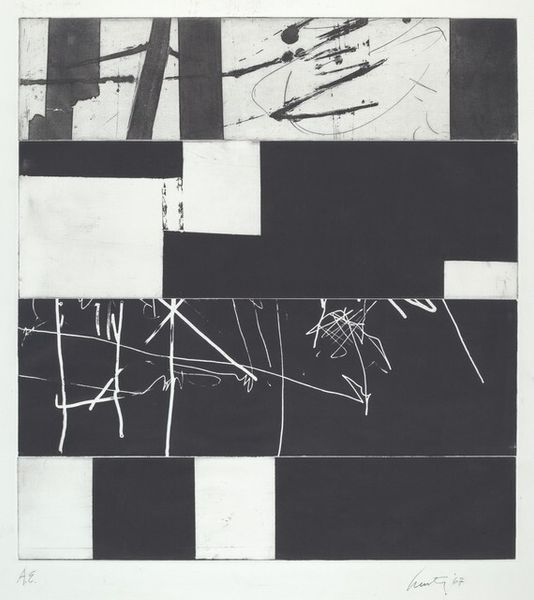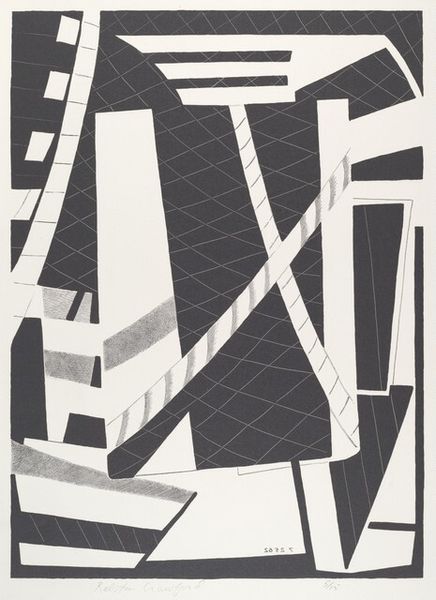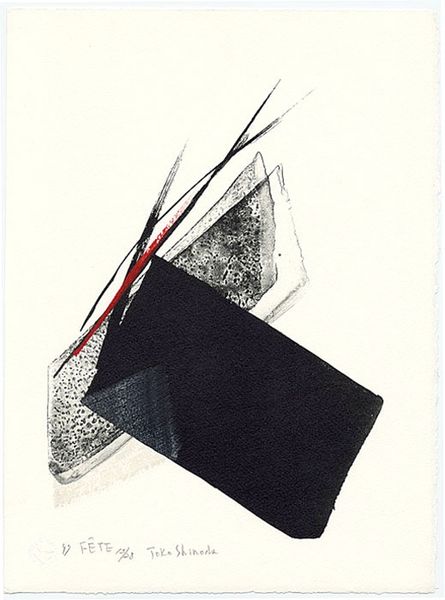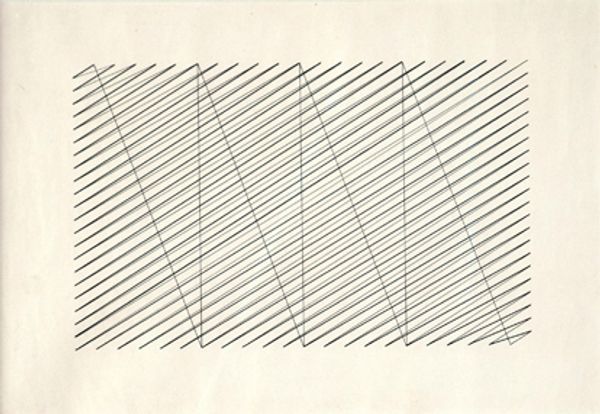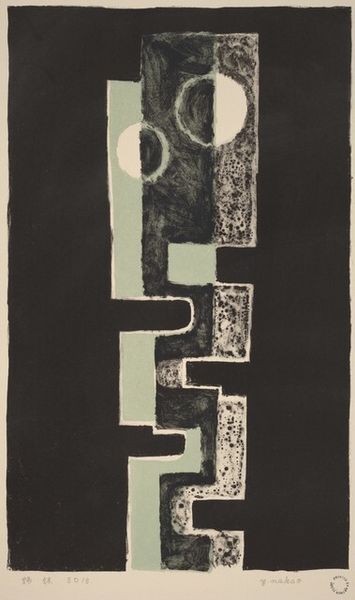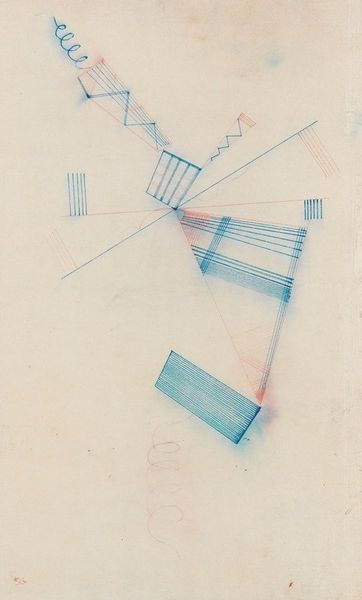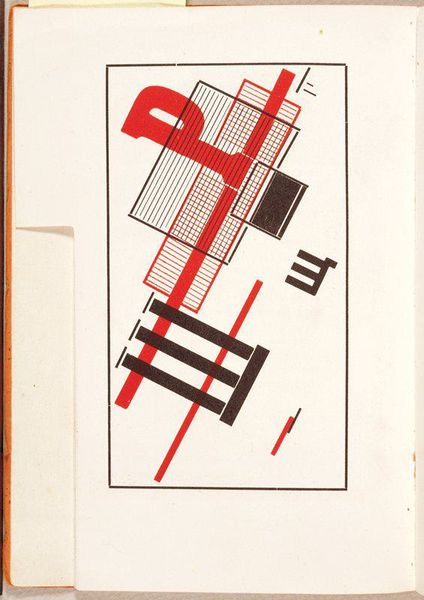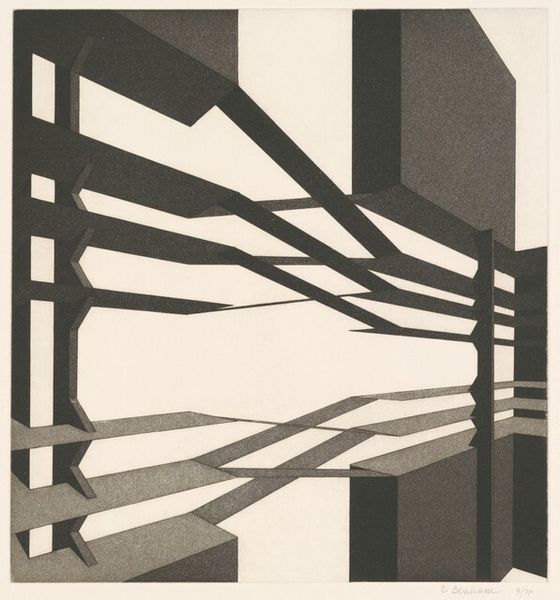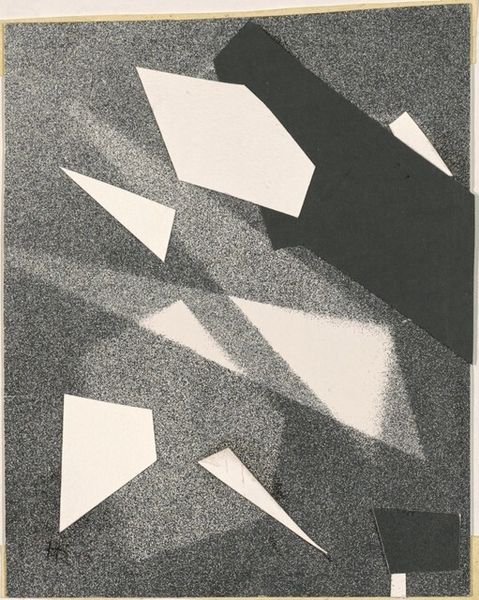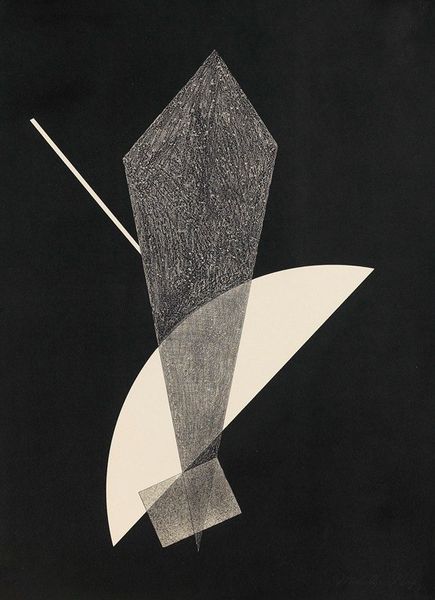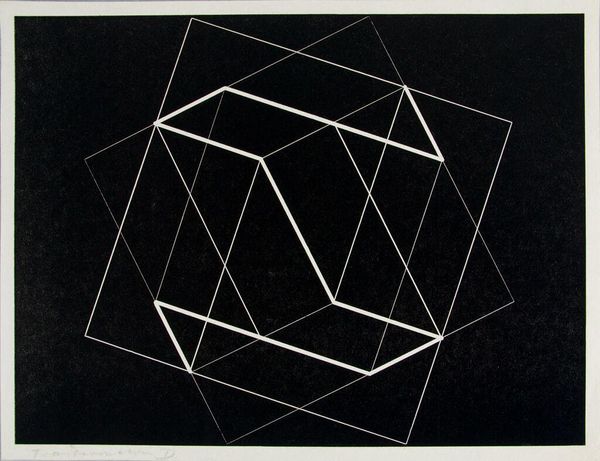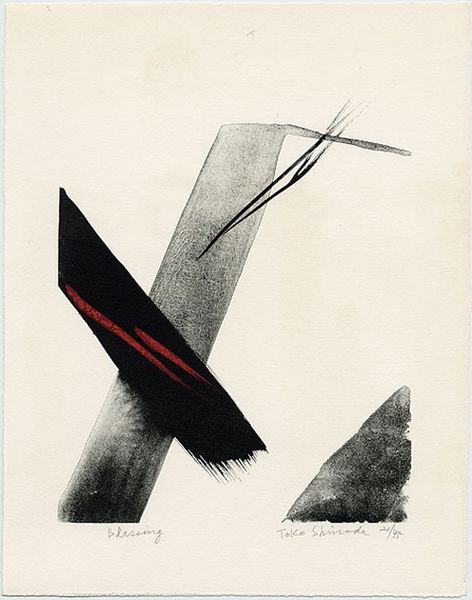
graphic-art, print, linocut
#
graphic-art
# print
#
linocut
#
constructivism
#
abstract
#
geometric
#
abstraction
#
line
#
bauhaus
#
monochrome
Copyright: Public Domain: Artvee
Curator: At first glance, I see a disrupted chessboard. The harsh black and white contrast is jarring, as are the angles, and lines that appear to be suspended mid-fall. Editor: Indeed! Today, we're looking at an untitled composition by László Moholy-Nagy. Created as a linocut print, it encapsulates the artist’s exploration of abstract geometric forms, heavily influenced by the Bauhaus movement. Curator: Moholy-Nagy’s style always felt incredibly prescient to me. When you consider the time in which this piece was created, you appreciate that he was truly innovative and breaking with figurative norms in ways that challenged the status quo of image-making. Editor: It's intriguing how Moholy-Nagy uses simple geometric shapes, lines and stark contrast, isn’t it? There's a deeper purpose, rooted in the desire to communicate universal concepts through visual language, to construct a new visual vocabulary that rejected ornament. The formal qualities of constructivism lend themselves to this goal, which has obvious resonance to the work's function. Curator: Yes! I completely agree! And if we analyze it psychologically, the starkness evokes an immediate, almost unsettling reaction. The dynamism hints at industrialization, at movement. One can even extrapolate commentary on social structures within these ordered planes and stark opposition. Editor: Exactly. Consider also the historical moment of this artwork—the rise of industrialism, rapid social change, the aftermath of war. Art like this can be seen as a visual manifestation of those tensions. How interesting that abstraction in this instance almost invites us to confront real-world upheaval, as opposed to distracting from it. Curator: It almost reads as a plan or a design, but for what? I always try to ascertain the core message the artwork conveys. Is this about celebrating progress? Or perhaps highlighting the fracturing impact on society and established traditions. Or indeed, maybe both. Editor: Absolutely, it functions on many layers. For me, experiencing this artwork underscores the value of remaining open to reinterpretation—of seeing art, even abstract forms, as dynamic records of a constantly evolving world. Curator: I leave seeing this piece today feeling encouraged to reconsider not just art, but established societal frameworks and systems. Editor: For me, it highlights how abstraction can invite the articulation of new meaning and understanding and function as an instrument for change.
Comments
No comments
Be the first to comment and join the conversation on the ultimate creative platform.
